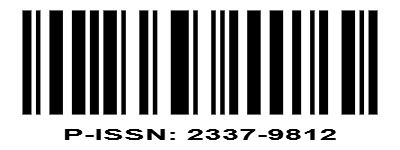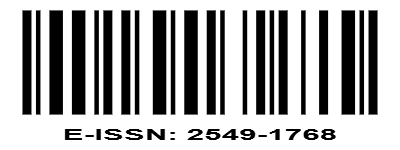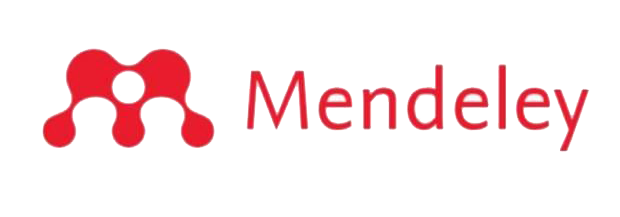Komposisi Juvenil Spat Geloina erosa di Kawasan Mangrove Sungai Reuleung Leupung Kabupaten Aceh Besar
DOI:
https://doi.org/10.22373/biotik.v3i2.1002Keywords:
Juvenile, Geloina Erosa, River ReuleungAbstract
This study aims to (1) know the composition of juvenile spat of Geloina erosa, and (2) find out the ratio of juveli Spat on the estuary area of the river, the flow and the headwaters of estuary area of the river in mangrove ecosystem Reuleung River Leupung, Aceh Besar district. The study was conducted in May and June 2015 in mangrove area Reuleung River Leupung Aceh Besar district. The research location was divided into three stations, namely station 1 at estuary area, station 2 at river flow and station 3 at headwaters of estuary of Reuleung River Leupung, Aceh Besar district. The samples were taken three times at three stations. In every stations and observations, 5 plot with size 1mx1m were taken. Juvenile spat composition was analyzed by using percentage, while the ratio of juvenile Spat was analyzed by using Chi-square. The results showed that the composition of the juveniles in the estuary area was 26.09% and in the flow area was 50.00%, while at the headwaters of estuary of the river was 0%. The composition of Spat at estuary location was 1 73.01%, at two regional river flow was 50% and at 3 locations of headwaters of estuary was 0%. The ratio between juvenile Spat at the estuary area was 1:3, while at the river flow was 1:1, and at the headwaters of estuary was 0:0. The conclusions were (1) The composition of the juvenile and spat were varied, and (2) the ratio of juvenile Spat in the Reuleung River Leupung Aceh Besar district was balanced and unbalanced.Downloads
References
Ngo, TTT, and KL. Quach. 2010. Reproductive Biology of Mud Clam Geloina Coaxans In Mangrove Forest Of Ca Mau Province, Mecong Delta, Vietnam. Proceedings of International Conference Marine Biodiversity of East Asian Seas:Status, Challengesand Sustainable Development, Nha Trang, Vietnam December 6-7,2010.
Rahmi, I., dan M. S. Ali. 2012. Kepadatan dan Dominansi Macrura di Ekosistem Mangrove Sungai Reuleng Leupung Kabupaten Aceh Besar. Skripsi. Banda Aceh: FKIP Unsyiah.
Ali, S.M., Y. Wardiatno, dan I. Huda. 2010. Kondisi Vegetasi dan Kerang Gelonia erosa Pasca Tsunami Dalam Kawasan Ekosistem Mangrove Pesisir Barat Kabupaten Aceh Besar. Jurnal Torani Unhas Makasar.
Sarong, M.A., M. Boer., R. Dahuri, Y. Wardiatno, dan S. Sukimin. 2010. Pengelolaan Kerang Mangrove Geloina erosa Berdasarkan Faktor Biologi di Kawasan Pesisir Barat Kabupaten Aceh Besar. Disertasi. Bogor: Sekolah Pascasarjana Institut Pertanian Bogor.
Riduan. 2006. Dasar-dasar statistika. Bandung: Alfabeta.
Bengen, D. 2004. Pengendalian dan Pengelolaan Ekosistem Mangrove. Bogor: Pusat Kajian Sumberdaya Pesisir dan Lautan.
Widyastuti, A., SBA. Omar, dan S. Kune. 2010. Musim Pemijahan Kerang Darah (Anadara antiquota) di Perairan Pulau AUKI Kepulauan Padaiko Biak Papua. Jurnal Moluska Indonesia, I: 35-43.
Dwiono, SAP. 2003. Pengenalan kerang mangrove G. erosa dan Geloina expansa. Oseana, 2: 31-38.
Setyobudiandi, I., Eoekendarsih, Y. Vitner, dan R. Setiawan. 2004. Bio-ekologi Kerang Lamis (Meretrix meretrix). Jurnal Ilmu-ilmu Perairan dan Perikanan Indonesia, 11: 61-55.
Downloads
Published
Issue
Section
License
Authors who publish with BIOTIK: Jurnal Ilmiah Biologi Teknologi dan Kependidikan agree to the following terms:
- Authors retain copyright and grant the journal right of first publication with the work simultaneously licensed under a Creative Commons Attribution License that allows others to share the work with an acknowledgement of the work's authorship and initial publication in this journal.
- Authors are able to enter into separate, additional contractual arrangements for the non-exclusive distribution of the journal's published version of the work (e.g., post it to an institutional repository or publish it in a book), with an acknowledgement of its initial publication in this journal.
- Authors are permitted and encouraged to post their work online (e.g., in institutional repositories or on their website) prior to and during the submission process, as it can lead to productive exchanges, as well as earlier and greater citation of published work.











